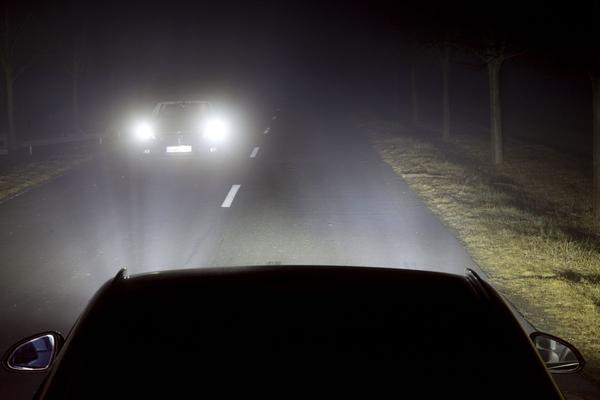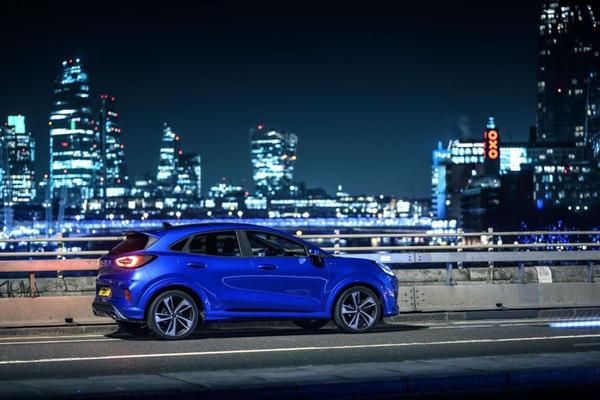Advice
Tips for driving in a weather warning
Driving during a weather warning requires care and attention. Read our tips on driving in a storm, floods and other bad weather conditions.
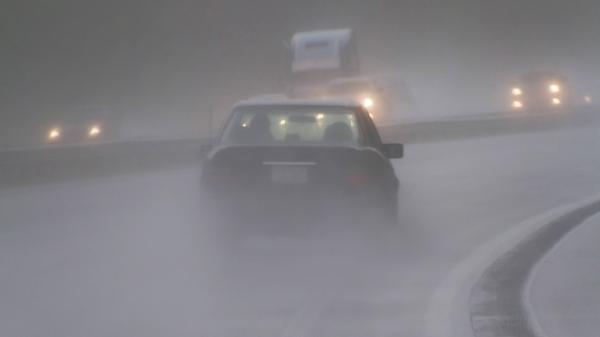

Words by: Nimisha Jain

Additional words by: Andrew Woodhouse
Last updated on 20 December 2023 | 0 min read
Weather conditions affect driving in several ways, depending upon the level of weather warnings issued by the authorities. The typical stopping distance changes, fog lights might become necessary, and a car journey planner might become essential to avoid flood prone areas.
Weather warnings are issued by the Met Office when severe weather conditions like storms, heavy rain, strong winds, snow, ice or extreme heat or fog are predicted in the next seven days.
Weather warnings are issued by the Met Office when severe weather conditions like storms, heavy rain, strong winds, snow, ice or extreme heat or fog are predicted in the next seven days.
There are three levels of weather warning:
1. Yellow warnings mean low-level impact and travel disruptions. It can also mean that severe impacts are predicted, but the likelihood of the impact is low. 2. Amber warnings mean either the impact of the weather or the likelihood of the disruption is higher. Travel is affected at a greater scale, with the possibility of road and rail closures, and there are chances of power cuts and risk to life and property. 3. Red warnings mean that there’s a high chance of risk to life, disrupted travel and power cuts due to dangerous weather. It’s usually advised to avoid travelling and keep an eye out for announcements from the emergency services and local authorities.There are some basic things that you should do when driving in bad weather, like:
• Look out for any severe weather warning by the Met Office • Maintain a safe speed • Be mindful of Vulnerable Road Users (VRUs) such as cyclists and pedestrians, who are at a higher risk of being affected by a car accident • Delay or avoid going out There are a few things to keep in mind specific to different, adverse weather conditions: car snow socks might be appropriate for one driving condition, but using fog lights might be the way to go on other days, depending on road and weather conditions.Driving in storms and strong winds
Driving in strong winds is dangerous, as there is a risk of vehicles being pushed sideways or losing steering control, especially for high-sided vehicles like Rigid HGVs, Luton vans, double-deckers etc. If you find yourself driving on a windy day, follow these top tips:
• Choose a route that avoids exposed areas, as strong winds can get under the car and significantly affect its handling and braking. • Use both hands on the wheel and avoid overtaking high-sided vehicles, as they could be blown into your path as you overtake. • Take particular care around cyclists and motorcyclists who are especially vulnerable in high winds. • Keep an eye out for twigs or branches in the road. • Take particular care early in the morning, as debris that has fallen overnight may not have been cleared yet. • Avoid parking near trees or tall buildings. • If you break down in strong winds, exit the vehicle by the passenger door and move to a safe location. Lorries and other high-sided vehicles could be blown off course and veer onto the hard shoulder. If you often find yourself driving in such weather conditions, look for a car with a good Traction Control System (ASR). Related: What are ESP and traction control in my car
• Choose a route that avoids exposed areas, as strong winds can get under the car and significantly affect its handling and braking. • Use both hands on the wheel and avoid overtaking high-sided vehicles, as they could be blown into your path as you overtake. • Take particular care around cyclists and motorcyclists who are especially vulnerable in high winds. • Keep an eye out for twigs or branches in the road. • Take particular care early in the morning, as debris that has fallen overnight may not have been cleared yet. • Avoid parking near trees or tall buildings. • If you break down in strong winds, exit the vehicle by the passenger door and move to a safe location. Lorries and other high-sided vehicles could be blown off course and veer onto the hard shoulder. If you often find yourself driving in such weather conditions, look for a car with a good Traction Control System (ASR). Related: What are ESP and traction control in my car
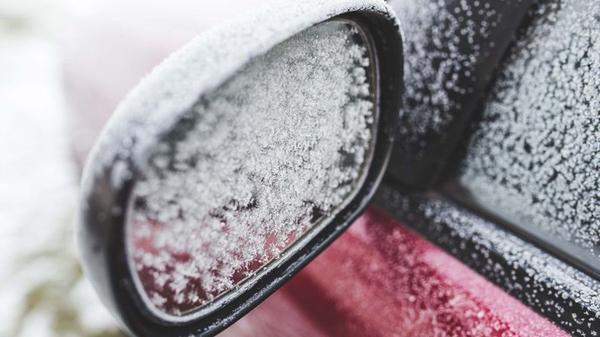
Driving in rain and floods
Roads are most slippery when oil and dirt coat the road, especially after the first rain.
• To avoid road accidents, maintain double the stopping distance between you and the car in front of you, as it takes double the time to stop on wet roads. • When the road has flooded, let the car in front of you go first so you can tackle the water one at a time and keep a slow and steady pace in the middle of the road. Test your brakes are working afterwards. Here’s a complete guide on driving in heavy rains and floods. Following these tips can help you keep the car running and risk-free from aquaplaning.
• To avoid road accidents, maintain double the stopping distance between you and the car in front of you, as it takes double the time to stop on wet roads. • When the road has flooded, let the car in front of you go first so you can tackle the water one at a time and keep a slow and steady pace in the middle of the road. Test your brakes are working afterwards. Here’s a complete guide on driving in heavy rains and floods. Following these tips can help you keep the car running and risk-free from aquaplaning.
Driving in ice and snow
For those driving in snow for the first time or for the 50th time, here’s a complete guide to winter driving to ensure that your car never slips on ice.
Here are some top tips from the guide to get you started: • Ensure you have de-iced the vehicle thoroughly and you can see clearly through all windows before you set off. • While maintaining a safe speed is important, it may be beneficial to drive in a higher gear, as this can help your tyres to grip the ice. • Stopping distances can be up to 10 times more than usual in snow and ice, so leave a large gap between the vehicles in front and drive slowly. • If traffic in front of you starts to slow, brake gently – slamming them on can cause you to lose control. • Only drive in ice if your journey is necessary too, as it’s best to stay off the roads when the driving conditions are treacherous. • If your car skids, press the clutch pedal and turn the steering wheel in the direction of the skid. When you start to straighten up, steer along the road. Resist the temptation to brake – it will cause your wheels to lock and you’ll skid further.
Here are some top tips from the guide to get you started: • Ensure you have de-iced the vehicle thoroughly and you can see clearly through all windows before you set off. • While maintaining a safe speed is important, it may be beneficial to drive in a higher gear, as this can help your tyres to grip the ice. • Stopping distances can be up to 10 times more than usual in snow and ice, so leave a large gap between the vehicles in front and drive slowly. • If traffic in front of you starts to slow, brake gently – slamming them on can cause you to lose control. • Only drive in ice if your journey is necessary too, as it’s best to stay off the roads when the driving conditions are treacherous. • If your car skids, press the clutch pedal and turn the steering wheel in the direction of the skid. When you start to straighten up, steer along the road. Resist the temptation to brake – it will cause your wheels to lock and you’ll skid further.
Driving in fog
Fog reduces visibility levels, making it especially difficult to spot any cyclists or pedestrians nearby when driving. If you’re wondering when to use your fog lights, here are some tips:
• When driving in fog, it is best to drive with a three-second gap in between you and the car in front, instead of the usual two-second gap. Slow down to a speed appropriate to the conditions so that the stopping distance needed is within the distance that you can actually see. • Know when to use fog lights: Front lights aid your visibility so use them even in light fog while saving the rear fog lights for dense weather conditions and considering the vehicle behind, as you could dazzle the driver. • Be especially wary of patchy fog – one moment the road can be visible, and in an instant visibility is almost zero. • Slow down gradually and give yourself and vehicles behind you time to react to whatever appears in front. • If the driver behind is too close, slow down even more to manage the gap in front and if the tailgating persists, find somewhere safe to pull over and let them pass. • Don’t be tempted to follow another vehicle at speed just because they seem to be able to see.
• When driving in fog, it is best to drive with a three-second gap in between you and the car in front, instead of the usual two-second gap. Slow down to a speed appropriate to the conditions so that the stopping distance needed is within the distance that you can actually see. • Know when to use fog lights: Front lights aid your visibility so use them even in light fog while saving the rear fog lights for dense weather conditions and considering the vehicle behind, as you could dazzle the driver. • Be especially wary of patchy fog – one moment the road can be visible, and in an instant visibility is almost zero. • Slow down gradually and give yourself and vehicles behind you time to react to whatever appears in front. • If the driver behind is too close, slow down even more to manage the gap in front and if the tailgating persists, find somewhere safe to pull over and let them pass. • Don’t be tempted to follow another vehicle at speed just because they seem to be able to see.
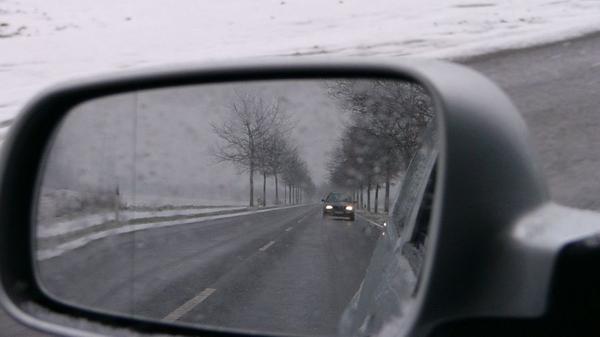
Driving in the dark
What’s worse than driving on wet roads? Driving in heavy rain at night!
Learning to drive in the dark can take time, but hopefully these simple tips will help you drive overnight safely: • To see better while driving at night, use your main beams to see as far as possible on unlit roads and ensure your speed is such that you can stop in the distance you can see. Switch to dipped beams immediately if you see another vehicle approaching. • Some modern vehicles have bright HID headlights that despite being legal and dipped, can make it hard to see. Don’t be tempted to flash your lights – that will only dazzle the other driver. • Focus on the left-hand edge of the road and try not to look at the approaching headlights. If in doubt, slow down. • In towns and cities, keep watch for pedestrians wearing dark clothing, cyclists without lights and other VRUs.
Learning to drive in the dark can take time, but hopefully these simple tips will help you drive overnight safely: • To see better while driving at night, use your main beams to see as far as possible on unlit roads and ensure your speed is such that you can stop in the distance you can see. Switch to dipped beams immediately if you see another vehicle approaching. • Some modern vehicles have bright HID headlights that despite being legal and dipped, can make it hard to see. Don’t be tempted to flash your lights – that will only dazzle the other driver. • Focus on the left-hand edge of the road and try not to look at the approaching headlights. If in doubt, slow down. • In towns and cities, keep watch for pedestrians wearing dark clothing, cyclists without lights and other VRUs.
